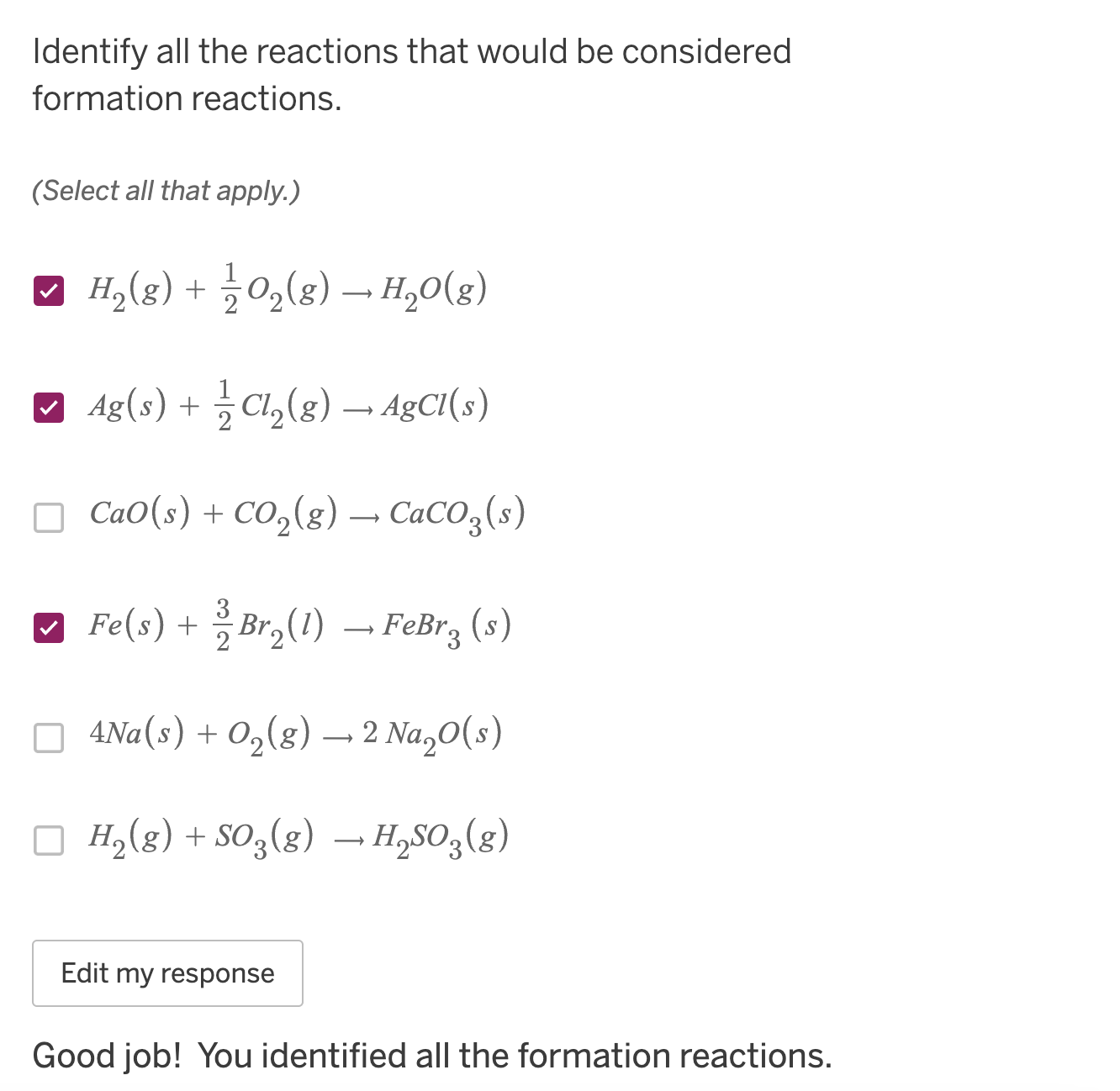Introduced to this material in AP Chemistry
What is it?
A formation reaction is when all the reactants (left side of the equation) are elements and the coefficient for the single product (there can only be 1 product) must be 1.
To have the coefficient of 1 for the product you may need to use fractional coefficients for the reactants
When 1 mole of compound is formed with elements in their standard states it’s known as Enthalpy Formation
Example of Formation Reaction
C (s) + O (g) -> CO (g)
H = -393.5 kJ
C (s) + O (g) -> CO (g)
H = -110.53 kJ
More examples and non-examples:
